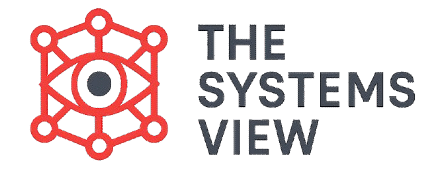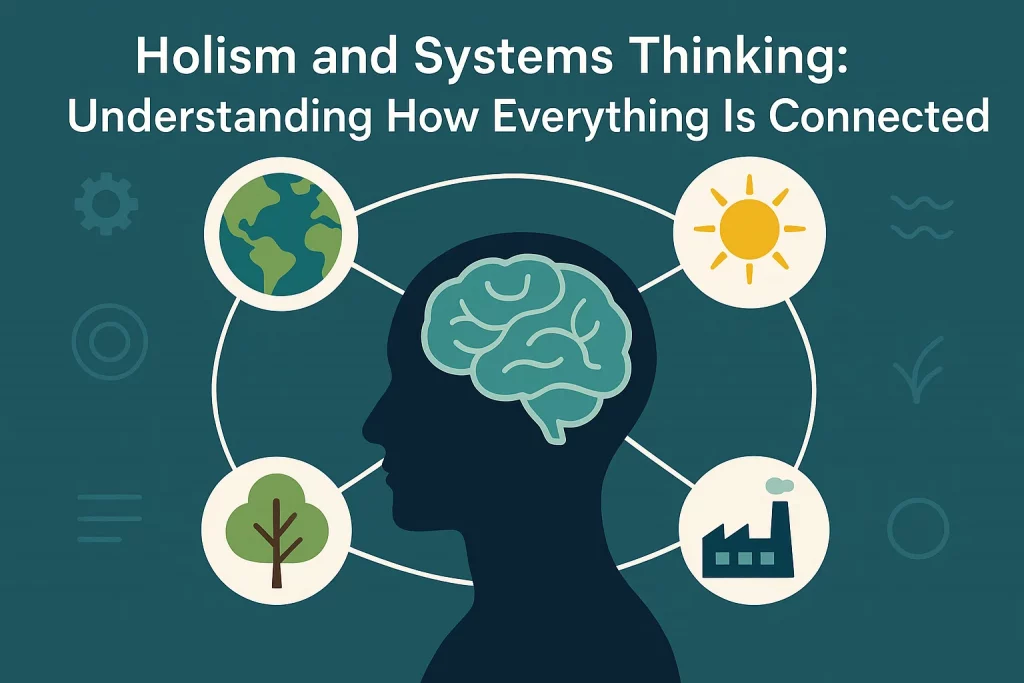Imagine trying to understand a complex machine by studying its smallest metal pieces under a microscope. You would learn a lot about the metal, but nothing about the machine’s ability to move or work. Holism is the powerful idea that shifts your focus from the separate pieces to the overall functioning whole.
Holism is the philosophical foundation upon which the entire field of Systems Thinking is built. It insists that nothing in the world—from a single human cell to a global economy—can be truly understood in isolation. Instead, everything is part of a larger, interconnected system. To grasp the true nature of something, you must look at how its parts are organized and how they relate to each other.
Core Principle: The System is Greater
The fundamental principle of holism is simple yet profound: the whole is greater than the sum of its parts. This idea directly defines what a “system” is. When components come together to form an organized system, they create new features that did not exist before.
Systems Thinking Starts with Emergence
The difference between the parts and the whole is accounted for by emergent properties. These are unique behaviors or characteristics that only appear when the system’s components are connected and interacting in a specific way.
- Holism’s Role: Holism tells the systems thinker where to look. It tells them to ignore the isolated components for a moment and instead focus on the emergent properties—like consciousness in a brain or profit in a company. These properties are the reason the system exists.
- The Connective View: Systems Thinking uses tools like feedback loops and system diagrams to map the organization and relationships between the parts. For a holist, the pattern of connection is more important than the material being connected.
The System Boundary
Holism immediately affects the first step of any systems analysis: defining the system boundary. A holistic thinker must draw the boundary wide enough to include all the essential components and flows (like energy or information) necessary for the whole system to function. If the boundary is too small, you miss the crucial connections.
Holism as the Great Challenger
Holism was formally introduced into modern science to challenge reductionism, the traditional method of analysis. Systems Thinking was born from this challenge.
Rejecting the Reductionist Trap
Reductionism tries to understand complexity by breaking it down into the simplest, non-interacting pieces (like individual chemical molecules).
- The Flaw: By breaking the system apart, reductionism destroys the relationships and thus misses the emergent properties. It cannot explain complex phenomena like life, growth, or self-organization.
- The Systems Solution: Systems Thinking embraces Holism as the necessary philosophical shift. It acknowledges that while reductionism is good for simple science, holism is required for complexity.
The Universal Connection
Because Systems Thinking is based on holism, it seeks universal organizational rules. Holism leads to the conclusion that a complex problem in one field (like biological adaptation) will follow the same organizational rules as a problem in another field (like corporate strategy). Concepts like Open Systems and Dynamic Equilibrium apply universally because they are holistic rules of organization.
Holism is the intellectual foundation of Systems Thinking. It directs the analyst to focus on the interconnected whole, recognizing that a complex, organized entity possesses essential characteristics that its individual, isolated components do not.
How Holism Structures Complex Systems
The holistic viewpoint means that every system is usually a part of a larger system, leading to the idea that everything is ultimately nested.
Systems Within Systems (Subsystems)
Holism leads naturally to the idea of nested systems. A smaller system is a subsystem of a larger one, and it is governed by the rules of that larger context.
- Your heart is a subsystem of your body.
- Your body is a subsystem of your family.
- Your family is a subsystem of society.
A Systems Thinker, using a holistic view, understands that to fix a problem in the heart, they might need to look at the behavior of the entire body (diet, stress, environment). The holistic view forces the analyst to look upwards to the bigger context.
Application in Problem Solving
In problem solving, holism means asking, “What is the larger system this problem is part of?”
- A reductionist asks: “What part is broken?”
- A systems thinker (holist) asks: “What is the pattern of interaction that is causing this undesirable outcome?” This shift from focusing on parts to focusing on patterns is the practical application of holism.
Conclusion
Holism is the essential philosophical engine of Systems Thinking. It moves analysis beyond simply breaking things apart and insists on studying the complete organization and relationships of the whole. By focusing on emergent properties and recognizing that everything is interconnected and nested, holism provides the universal lens for understanding how complex systems function and adapt in our world.



